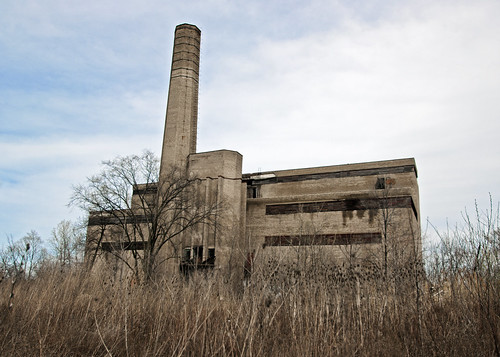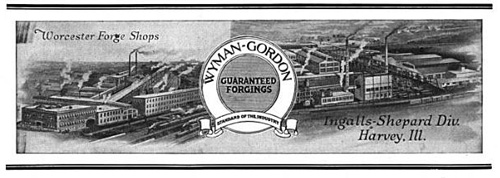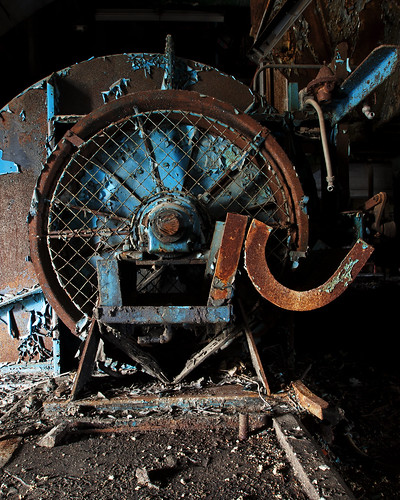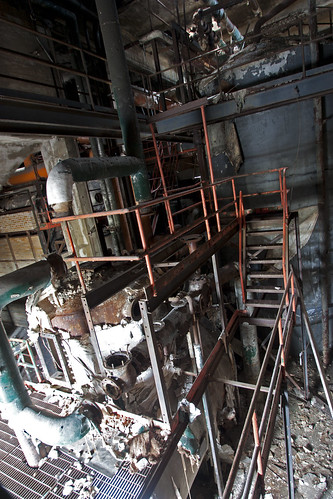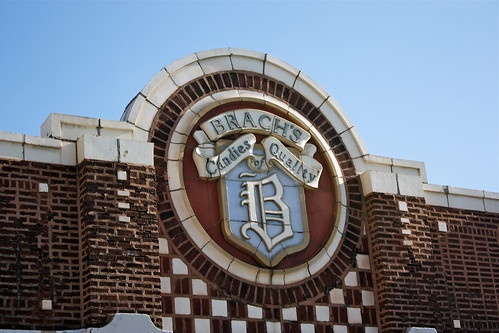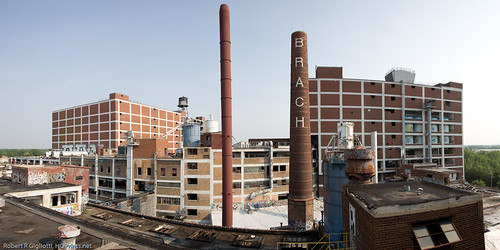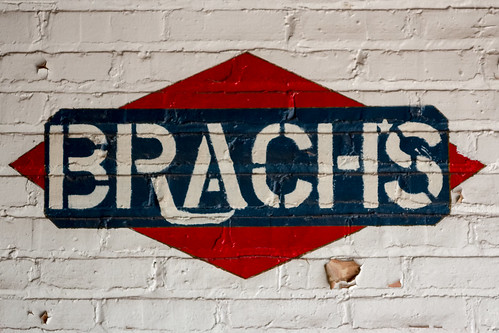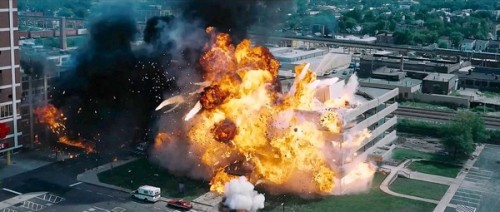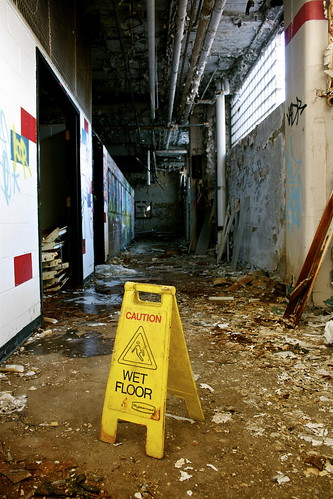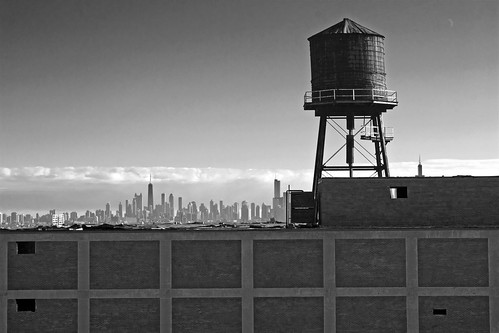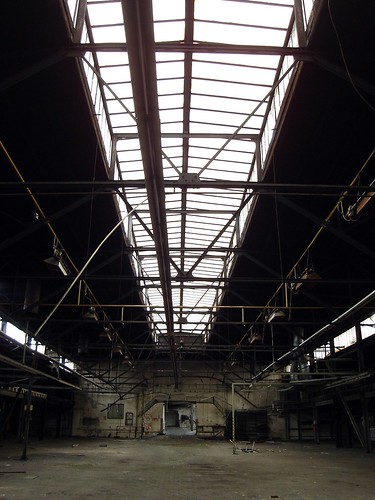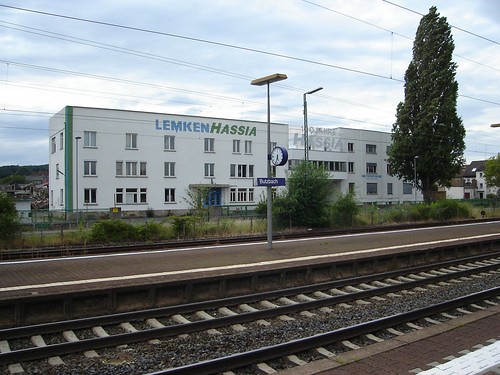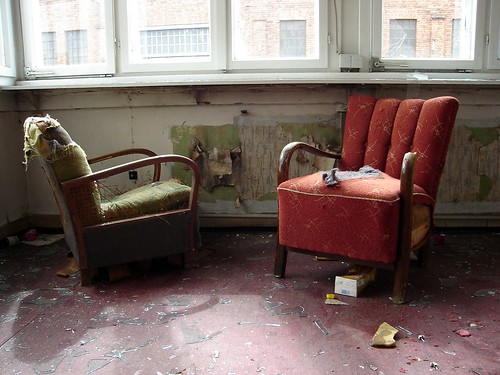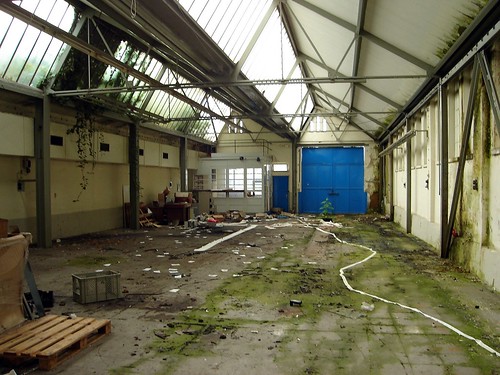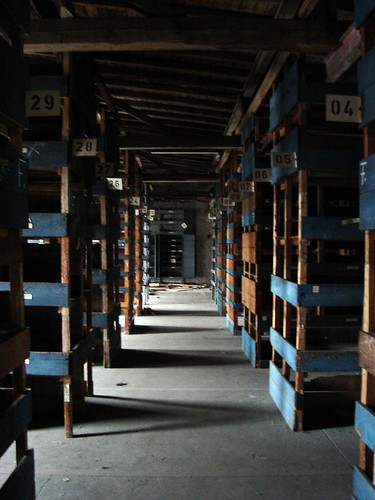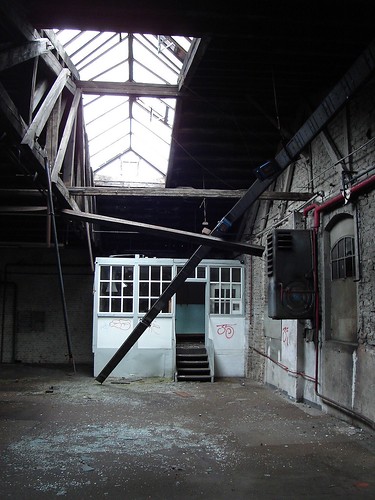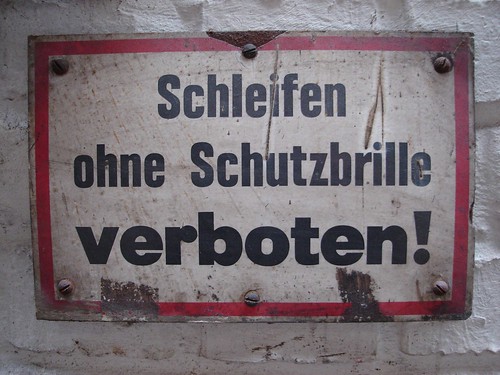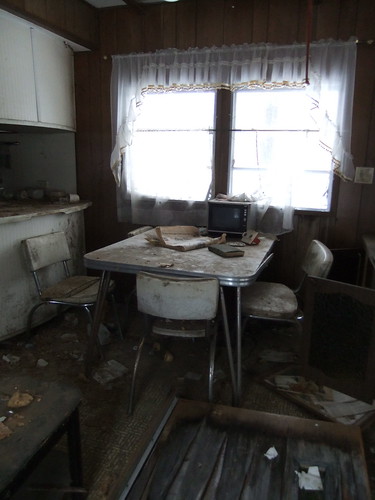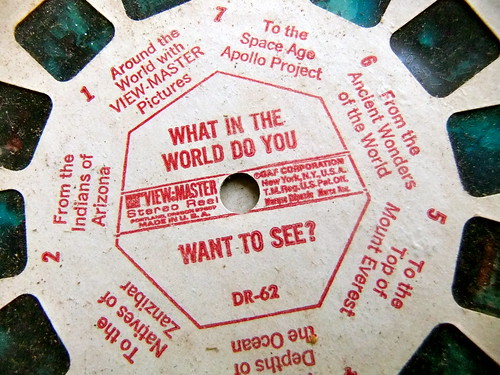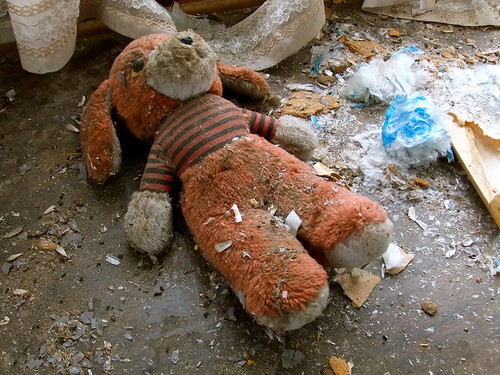Photo: Power plant for what was originally the Ingalls-Shepard Forging Co.
In 1910 seasoned manufacturing veterans F.A. Ingalls and Charles C. Shepard partnered to create the Ingalls-Shepard Forging Co. in Harvey, Illinois. Ingalls took up the mantle of President and treasurer, while Shepard acted as Vice President. The company produced a wide range of parts for the burgeoning automobile industry and railroad companies. As the world delved into chaos during the War to End All Wars industrial manufacturers across the United States were pushed to the limits of their operating capacities to great profit. In 1920 the Wyman-Gordon Company out of Worcester, Massachusetts acquired the Ingalls-Shepard Forging Co. and rechristened it as the Ingalls-Shepard Division. The consolidation placed Ingalls as Vice President of Wyman-Gordon, but he would still maintain operational control over the Harvey factory.
Photo (source): Logo from an advertisement for Wyman-Gordon with the Harvey plant on the right.
The Roaring Twenties were a boon for the steel industry. The automobile, which had been a luxury item the previous decade, now entered the American mainstream as mass production made “horseless carriages” accessible to the general public. The automobile may have driven urban development outward, but new architectural technologies drove cities upwards. Skyscrapers demanded strong metal frameworks to withstand environmental punishment. New massive machines such as massive cranes and earth movers were needed to move materials. While skyscrapers penetrated the sky, aeronautic developments of the Great War brought with it the commercialization of airplane travel. Wyman-Gordon produced parts that serviced every one of these industries. At the outset of World War II all large US manufacturers devoted their efforts to defeating the Axis, which Wyman-Gordon used to their industrial advantage. US Army engineers kept on the heels of the front lines to dismantle superior German industrial technology and pass it on to American businesses such as Wyman-Gordon. The Wyman-Gordon company claims to have produced more single parts for the war effort than any of its entirety of its competitors in the industry.
Photo: The equipment is completely rusted over.
Innovation in the aeronautics industry drove Wyman-Gordon business for the next few decades. By the 1960’s the Wyman-Gordon company was recognized as the leading innovator in forging and titanium technologies. The US government contracted with Wyman-Gordon to create parts for the B-52 Stratofortress, the secret SR-71 spy plane, F-14 Tomcat and F-15 Eagle fighter jets. In the civilian market the company produced parts for hundreds of other aircraft. In the 1980’s, however, declining defense expenditures, sagging commercial airline development, and international competition put manufacturers like Wyman-Gordon into commercial distress.
In order to stay operational Wyman-Gordon decided to shutter the Ingalls-Shepard Division in Harvey. The announcement proved devastating as the community had already endured the recent closing of three other major manufacturing employers. The company tried in vain to sell the 780,000 sq. foot facility for over six months, but was unable to find a buyer. The manufacturing of diesel engine crankshafts was moved to the company’s Danville, Illinois plant and special manufacturing to Jackson, Michigan. In 1986 the closing of the Ingalls-Shepard Division took with it 350 jobs from Harvey.
Photo: Massive storage areas several stories tall.
Plans for redevelopment of the 47-acre industrial site revolve around tapping into Harvey’s geographic advantages in transportation. The southern Chicago suburb has three expressways, four national highways, four freight railroads and the Chicago Metra lines running through it. Although a majority of the Ingalls-Shepard Division buildings have been demolished, the Environmental Protection Agency has listed the location as a brownfield in need of cleanup before development can continue. It would seem logical that Wyman-Gordon would be on the hook for cleaning up the site, but that is not the case. With one of the highest unemployment rates in the Chicago area and lowest average household income Harvey cannot afford the up front costs for assessing the property. Compounding an already bad situation is the fact that the total cost of cleanup may exceed the market value of the land once remediated.
All that remains of the Ingalls-Shepard Division is the power plant and a still occupied large building across the street from it. Fences border the entire perimeter of the power plant, but are pried wide open in several areas. The building is about four or fives stories high with an even higher smokestack affixed to the rear. On the inside the factory has been scrapped and everything metal has the patina of decay. The interchangeable fixtures of the heavy machinery are all missing, but the core pieces remain. Coal hoppers, generators, and some dynamos encased in a heavy layer of rust remain. Steel walkways crisscrossing the upper portions are missing large sections and appear quite unsafe for even the most seasoned urban explorer to traverse.
Photo: Some of the steel walkways have large sections missing.
The Ingalls-Shepard Division power plant is a monument to the prosperity once generated in the Harvey. The power plant will most likely loom over the community until the federal government steps in with enough money to remediate the land. In the long run the tax-payers will end up paying for Wyman-Gordon’s mess.
There is still one thing that I have been unable to pin down about this location though. Why was the power plant spared from demolition when the rest of the factory came down? If you have an answer, please leave it in the comments.
Resources:
ASME (PDF) – Fascinating brochure detailing how US troops captured superior German forging technology during World War II and passed it on to Wyman-Gordon.
Chicago Tribune – 1985 article announcing Wyman-Gordon plans to sell the Ingalls-Shepard Division plant.
Chicago Tribune – 1986 article announcing 350 layoffs from the Wyman-Gordon plant.
Chicago Tribune – 2010 article on the EPA cleanup of the Wyman-Gordon plant.
CNT (PDF) – Document describing a collaborative effort between Harvey and Dixmoor authorities to remediate the site.
EPA – Facility Detail Report by the Environmental Protection Agency.
EPA – 1997 Brownfield Assessment Pilot by the Environmental Protection Agency.
Flickr – My Wyman-Gordon photo set.
Google – Wyman-Gordon company timeline.
Google Books – 1910 Railway Age Gazette article mentions construction of the Ingalls-Shepard Forging Co. building in Harvey, which was acquired in 1919 by Wyman-Gordon.
Google Books – 1917 Electrical Review succinctly explains why electrical furnaces are better than gas fueled ones.
Google Books – 1920 Machinery mention on the merger of Ingalls-Shepard Forging Co. and Wyman-Gordon.
Google Books – 1920 Electrical World mention of an electric heat furnace used at the Ingalls-Shepard Forging Co.
Google Books – 1922 Wyman-Gordon advertisement from the Society of Automotive Engineers that has the Harvey plant pictured.
Flickr – Flickr user reallyboring’s set of the Wyman-Gordon plant.
Funding Universe – Wyman-Gordon company history.
IQMesothelioma – Law firm notice of asbestos and mesothelioma health risks for former workers at the plant.
